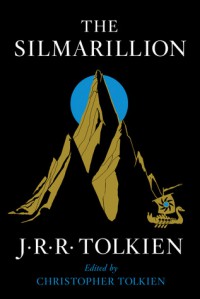Currently reading
The Silmarillion

The creation of Middle-earth and its First Age is presented in both mythical and historical accounts that set the stage for The Lord of the Rings in the world’s Third Age. The Silmarillion is the posthumously published collection of J.R.R. Tolkien’s worldbuilding tales concerning the creation and history of Middle-earth focusing on the First Age but also delving into the relevant history leading to the War of the Ring.
Middle-earth was created through song by the Ainur, though one of their number—Melkor—attempts to disrupt the tune three times but it overpowered by Eru (God). Eru then showed the Ainur a vision of the world and offered them the chance to enter it and rule, many took up the offer including Melkor. While many of the Ainur, the more powerful Valar and lesser Maiar, attempted to create a world for the Elves and Man, Melkor repeatedly destroyed their work and seduced some of the Maiar to his side, including Sauron. The book then shifts into the Tale of the Simarils, which were three jewels crafted by the Elf Feanor that glowed with the light of the Two Trees that were the only source of light before the Moon and Sun were created by the last remnants after their destruction by Melkor who then killed Feanor’s father and stole of the Simarils. Feanor long duped and corrupted by Melkor’s lies leads the Nordor Elves out of the West to Middle-earth to regain the jewels and do terrible things while Feanor and his sons make a dark oath to recover the jewels. Over the next 500 years, the various Elven groups in Middle-earth battle the now entitled Morgoth and his minions while later to be joined by Men. But the curse of Feanor devastates the Nordor and all that become related to them or allied to them or that touch the Simarils. Eventually a Elf-Man, Earendil arrives in The West to beg for help against Morgoth and the Valar with those Elves that hadn’t join the Nordor attack Morgoth and overpower him but the Simarils are lost in Space, the Sea, and the Earth until the End of the World. The book then gives an overview of the Second Age and the time of Numenor, their glory and fall by the lies of Sauron who’s defeat by the Last Alliance ends the Age and disperses his power for a time. And finally, the book ends with the overview of the creation of the rings of power and the Ring by Sauron then an overview of the lead up to and through the War of the Ring as seen in The Lord of the Ring.
While Tolkien did have some wonderful worldbuilding ideas, the mix of mythical and historical tales were hit-and-miss with a lot of dryness poured on. While there is a somewhat narrative framework to the book, there is no narrative flow. Though some of this can be attributed to the intermixture of tales that bent towards the mythical or the historical, they weren’t meshed together very well and that is probably because of the posthumous nature of the book as Tolkien’s son Christopher put the book together and added sections using his father’s notes to bridges things within a large framework but there was a randomness to things.
Overall The Silmarillion should be seen a collection of mythical and historical tales within a large framework, but one that doesn’t mesh well and at times is disjointed. This is a book for hardcore Tolkien fans not general readers who would be stratified with The Hobbit and The Lord of the Rings.





